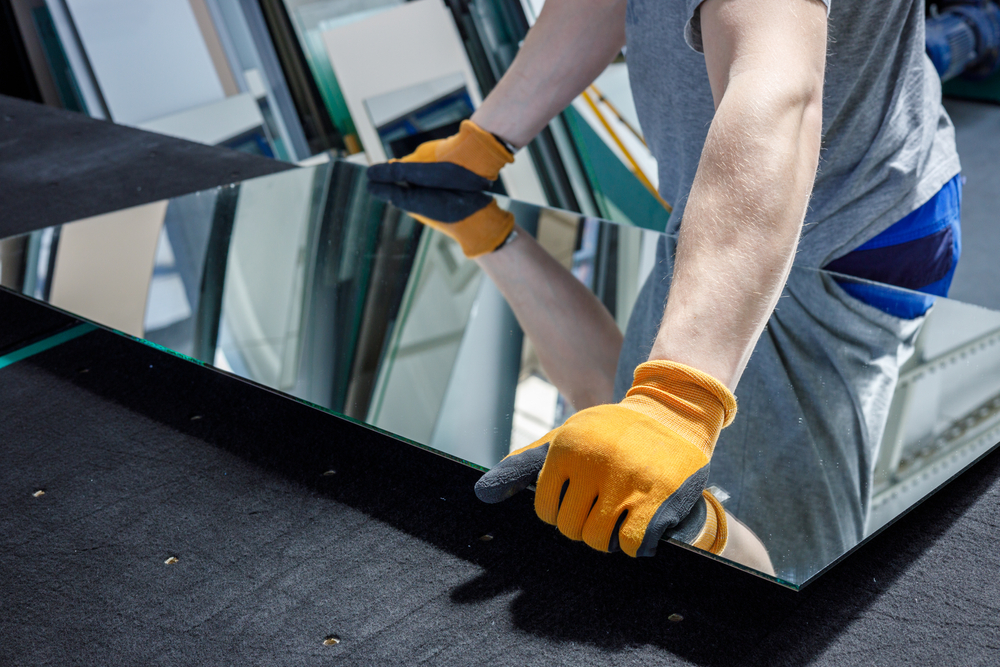How to Repair Mirror Scratches

A scratched mirror can be a frustrating and unsightly problem. Whether it’s a small blemish or a deep scratch, it can affect the aesthetic appeal of your home or vehicle. Mirrors are essential for a variety of purposes, from enhancing the interior design of your space to serving practical functions like checking your appearance or helping with driving. However, over time, mirrors can get scratched, chipped, or damaged due to accidents, improper cleaning, or wear and tear. Fortunately, there are several ways to repair mirror scratches, depending on the severity of the damage. This guide will walk you through different methods of how to repair mirror scratches, saving you time and money compared to replacing the entire mirror.
Understanding the Severity of the Scratch
Before attempting any repair, it’s crucial to assess the severity of the scratch. Mirror scratches can vary from minor surface imperfections to deep gouges that penetrate through the reflective coating. If the scratch is minor, it can often be repaired at home with simple tools and materials. However, if the scratch is deep and goes beyond the surface layer, the repair might require professional help, or in some cases, mirror replacement.
Minor scratches typically only affect the outer layer of the mirror, which is usually a reflective coating or glass. These can often be buffed or polished out using specific compounds or tools. On the other hand, deeper scratches may affect the reflective surface, making it more challenging to repair them without compromising the clarity and functionality of the mirror.
Once you have identified the type of scratch, you can proceed with the appropriate repair method. However, for deeper damage that compromises the mirror’s reflective properties, it is advisable to consult a professional for a more permanent and effective solution.
Using Toothpaste to Repair Minor Scratches
One of the easiest and most cost-effective methods to repair mirror scratches is using toothpaste. While it may sound unconventional, toothpaste contains mild abrasives that can gently buff out minor scratches on a mirror’s surface. To begin, ensure the mirror is clean and dry to prevent additional dirt from scratching the surface during the repair process.
Start by applying a small amount of toothpaste directly onto the scratch. Use a soft, clean cloth or a cotton ball to gently rub the toothpaste into the scratched area. It’s important to use circular motions while applying the toothpaste, as this will help buff the scratch and blend it with the surrounding surface. After a few minutes of gentle rubbing, wipe away any excess toothpaste with a damp cloth.
If the scratch remains visible after the first attempt, repeat the process. However, it’s crucial not to overdo it, as excessive rubbing may cause additional damage to the mirror’s reflective coating. Toothpaste is ideal for light surface scratches, but it may not be effective for deeper or more severe scratches.
Using Baking Soda Paste to Repair Deeper Scratches
For slightly deeper scratches that cannot be treated with toothpaste alone, a baking soda paste may provide a more robust solution. Baking soda is an abrasive substance that can help remove scratches by polishing the damaged area. To create the paste, mix a small amount of baking soda with water until it forms a thick, paste-like consistency. Once your paste is ready, apply it directly onto the scratch, ensuring that the area is well-covered.
Just like with the toothpaste method, use a clean, soft cloth to gently rub the paste onto the scratch. You should use circular motions to ensure that the paste polishes the surface evenly. After a few minutes of gentle polishing, wipe away the paste with a clean damp cloth. You may need to repeat the process several times if the scratch is deep, but remember to always apply gentle pressure to avoid damaging the mirror.
If the scratch still persists after several attempts with baking soda paste, you may need to consider more advanced methods or consult a professional for further assistance.
Using a Glass Repair Kit for More Effective Results
If home remedies like toothpaste or baking soda don’t work, a glass repair kit may offer a more professional solution for repairing mirror scratches. These kits are designed specifically for repairing minor damage to glass surfaces, including mirrors. Glass repair kits typically include a resin or polish compound that can be applied to the scratched area, followed by a curing process to restore the mirror’s clarity and smoothness.
To use a glass repair kit, start by cleaning the mirror thoroughly. Dust and dirt can interfere with the repair process, so it’s important to ensure the surface is completely clean. Once the surface is dry, apply the resin or compound to the scratched area, following the instructions provided in the kit. Some kits may require you to use a special tool to spread the compound evenly across the scratch.
After applying the repair compound, the next step is to allow it to cure. Depending on the specific product, this curing process may take anywhere from a few hours to a day. Once the compound has fully set, you can use a clean cloth to buff the surface and remove any excess resin. The result should be a smoother surface with less visible scratches.
While glass repair kits can provide more effective results than DIY methods, they still may not fully repair deep scratches that affect the mirror’s reflective coating. For such damage, a professional repair service may be necessary.
When to Call a Professional
While DIY methods can be effective for minor to moderate scratches, there are cases where it’s best to call a professional. If the scratch is deep, extensive, or located in a critical area of the mirror, attempting to repair it yourself may lead to further damage. Professionals have access to specialized equipment and materials that can effectively repair even the most severe scratches while preserving the integrity of the mirror.
For mirrors in vehicles, particularly car side mirrors, professional repair is often necessary. A scratched side mirror can impair your visibility, which could pose a safety risk. Many automotive repair shops offer mirror repair services, and they can restore the mirror to its original condition. In some cases, they may recommend replacing the entire mirror if the damage is beyond repair.
Likewise, if the mirror is part of an expensive or antique item, such as a vintage mirror frame, it’s a good idea to consult an expert who can repair the scratch without compromising the value of the item. Professional repair services may also be needed if the mirror has additional issues like cracks or chips, which can be challenging to address with DIY methods.
Conclusion
Repairing mirror scratches is a straightforward process for minor imperfections, but it becomes more complicated with deeper scratches. Whether you are using toothpaste, baking soda, or a glass repair kit, the right approach will depend on the severity of the scratch. While DIY repairs can be effective for surface-level scratches, deeper damage may require professional intervention to restore the mirror’s original clarity and functionality. Always assess the scratch carefully before proceeding with any repair method, and when in doubt, seek the help of a professional to ensure that your mirror is repaired properly without further damage.
